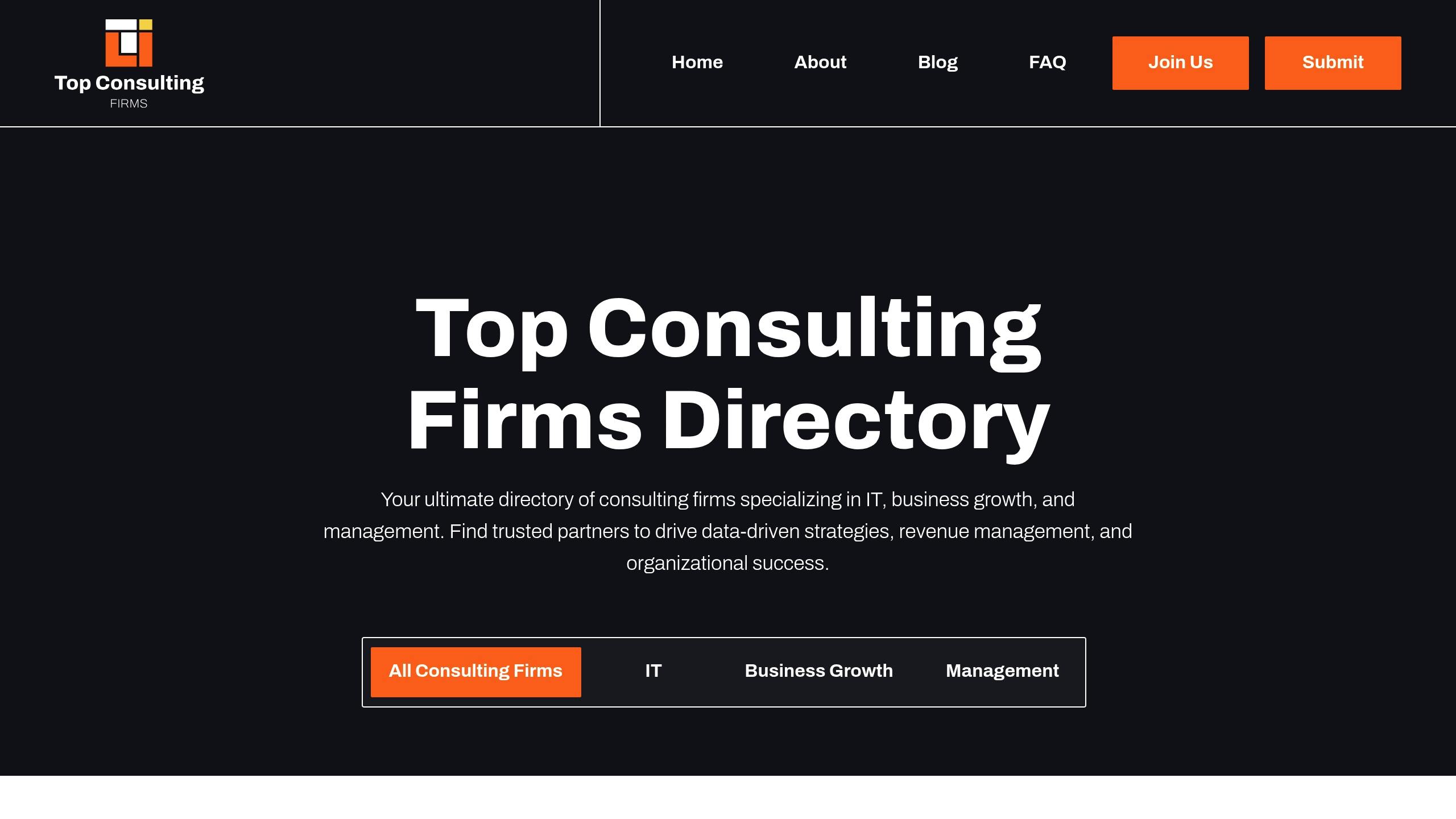Vision and mission statements are essential for guiding a company’s strategy. They define purpose, set goals, and align daily actions with long-term objectives. Here’s the key difference:
- Vision Statement: Focuses on the future (5–10+ years), outlining where the organization wants to go.
- Mission Statement: Focuses on the present, explaining why the organization exists and whom it serves.
Why They Matter:
- Vision drives long-term direction and ambition.
- Mission ensures daily operations stay aligned with the bigger picture.
- Together, they influence decisions, resource allocation, and company culture.
Quick Comparison:
| Aspect | Vision Statement | Mission Statement |
|---|---|---|
| Timeframe | Future (5–10+ years) | Present |
| Purpose | Defines long-term aspirations | Explains current purpose |
| Focus | Broad and inspirational goals | Specific and actionable steps |
To craft effective statements:
- Define core values to guide behavior.
- Set clear, measurable goals.
- Align vision with mission for strategic consistency.
Want help refining your vision and mission? External consultants can provide expertise. Check out resources like the Top Consulting Firms Directory for guidance.
Mission And Vision Statement Examples: How To Write Them
Vision and Mission Basics
This section dives into the distinct roles and features of vision and mission statements. These two pillars are essential for shaping an organization's direction and defining its purpose over different timeframes.
Defining Vision Statements
A vision statement outlines what an organization aims to achieve in the future. Think of it as a guiding star that influences strategic decisions and motivates stakeholders to work toward shared goals.
Key traits of a strong vision statement include:
- A focus on the future
- Clear, measurable objectives
- Ambitious and motivating goals
- Alignment with the organization's core values
Understanding Mission Statements
Mission statements focus on the present. They define an organization's purpose and values, answering critical questions like: Why do we exist? and Whom do we serve?
Vision vs Mission: Main Differences
To plan effectively, it's important to understand how vision and mission statements differ. Here's a breakdown:
| Aspect | Vision Statement | Mission Statement |
|---|---|---|
| Timeframe | Focused on the future (5-10+ years) | Grounded in the present |
| Focus | What the organization aspires to become | Why the organization exists today |
| Purpose | Sets a long-term direction | Guides current operations |
| Scope | Broad and aspirational | Specific and actionable |
Both statements are rooted in core values, which act as the foundation for organizational behavior.
"Core values are essential in defining how an organization will behave during the process of achieving its vision and mission. They provide a set of principles that guide decision-making and ensure that the organization stays true to its purpose."
When crafting these statements, they should be both inspiring and practical. The vision should chart a clear path for future growth, while the mission keeps the organization grounded in its current purpose and values.
Creating Vision and Mission Statements
Developing vision and mission statements requires thoughtful planning that captures your organization's goals and purpose. Here's how to create statements that resonate and guide your team.
Writing Your Vision Statement
A vision statement outlines where your organization aims to be in the future. It should be ambitious yet realistic, offering a clear and motivating direction.
Key elements of a vision statement include:
- Future state: Where you want to be.
- Timeline: A defined period, often 5–10 years.
- Impact: The change or difference you aim to create.
Once you define your vision, the next step is aligning it with your current operations through an effective mission statement.
Building Your Mission Statement
Your mission statement explains your organization's purpose and values, connecting your long-term vision with everyday actions.
"Core values are crucial in shaping the mission statement as they define how the organization intends to behave and operate. For example, a company might include 'innovation,' 'integrity,' and 'sustainability' as core values in its mission statement."
A good mission statement should clearly state your purpose, reflect your core values, and address the needs of key stakeholders - customers, employees, shareholders, and the community.
For additional support, check out the Top Consulting Firms Directory.
sbb-itb-97f6a47
Using Vision and Mission in Strategy
Turn your vision and mission into actionable strategies by linking your long-term goals with daily operations. By building on the fundamentals of vision and mission, organizations can create a clear roadmap that connects big-picture objectives to practical execution.
Connecting Vision and Mission to Planning
To make your vision and mission actionable, establish a structured framework that aligns high-level aspirations with specific actions. Strategic pillars act as the backbone of this framework, helping guide decisions on resource allocation, priorities, and performance tracking.
These pillars serve as the foundation for aligning activities with your goals. Here's how they break down:
| Strategic Area | Purpose | Key Considerations |
|---|---|---|
| Strategic Alignment | Ensure all efforts align with goals | Resource use, stakeholder needs |
| Operational Integration | Link daily tasks to broader goals | Process design, metrics |
| Cultural Reinforcement | Build commitment across the team | Communication, training, rewards |
Creating Plans and Goals
Once your strategy is in place, the next step is turning it into measurable objectives that cascade through every level of the organization. These objectives should directly support your vision and mission.
Execution typically happens across three levels:
- Strategic Objectives: Long-term goals tied directly to the vision.
- Tactical Plans: Medium-term initiatives that align with the mission.
- Operational Targets: Short-term, measurable outcomes that drive daily progress.
Regular reviews are crucial to track progress, address gaps, and adapt to market shifts or internal challenges. Clear communication ensures everyone understands how their work contributes to the overall strategy. Leaders play a key role in reinforcing these connections and keeping teams aligned.
For expert guidance on aligning vision and mission with execution, check out the Top Consulting Firms Directory for a list of specialists ready to assist.
Tools and Resources for Strategy Development
Creating effective strategies requires reliable tools and systems to connect your vision, mission, and execution. These tools help turn strategic goals into measurable results.
Measuring Strategy Success
To evaluate the success of your strategy, focus on these key metrics:
| Metric Category | Key Indicators | Purpose |
|---|---|---|
| Financial Performance | ROI, Revenue Growth, Profit Margins | Assess financial health |
| Operational Efficiency | Productivity Rates, Cost Reduction | Evaluate internal effectiveness |
| Strategic Alignment | Goal Achievement Rate, Market Share | Measure alignment with objectives |
| Stakeholder Value | Customer Satisfaction, Employee Engagement | Monitor relationships with key groups |
A solid measurement framework connects these metrics directly to your vision and mission. The Balanced Scorecard approach is a popular method for turning strategic objectives into trackable outcomes, ensuring a balance between short-term results and long-term goals.
"The fundamental purpose of strategic planning is to align a company's mission with its vision, ensuring that strategies and tactics align with core values", explains AchieveIt's white paper on strategic planning.
Here’s how to maintain focus:
- Schedule quarterly reviews to evaluate KPIs and update plans as needed.
- Use advanced analytics tools to generate actionable insights from your data.
- Combine quantitative metrics with feedback from customers, employees, and other stakeholders.
This approach is a strong foundation for working with experts to refine your tools and frameworks.
Top Consulting Firms Directory

Expert consultants can play a key role in enhancing your strategy development process. The Top Consulting Firms Directory connects businesses with specialists in areas like:
- Strategic management and planning
- Digital transformation projects
- Performance measurement systems
- Change management initiatives
This directory helps you find consultants with the industry knowledge and experience needed to align your vision and mission with measurable outcomes. When choosing a partner, prioritize firms with a proven ability to deliver results in your specific sector.
Consulting firms often provide helpful frameworks and tools, such as:
| Tool Type | Application | Benefits |
|---|---|---|
| Strategy Maps | Planning from vision to execution | Clear visualization of objectives |
| OKR Systems | Setting and tracking goals | Easy-to-measure progress indicators |
| Analytics Platforms | Monitoring performance | Data-driven decision-making |
Vision and Mission: Key to Strategy
Vision and mission statements are central to shaping a company’s strategy, connecting long-term goals with actionable steps. For example, LinkedIn's mission to "connect the world's professionals to make them more productive and successful" highlights how a focused mission can steer both strategic choices and daily operations.
The Three Pillars of Success
| Component | Role in Strategy | Impact on Business |
|---|---|---|
| Vision Statement | Defines future goals | Sets a clear long-term direction |
| Mission Statement | Explains current purpose | Guides everyday decisions |
| Strategic Alignment | Links goals with execution | Ensures steady, consistent progress |
Without these guiding statements, businesses can lose focus, leading to inconsistent decisions, reduced effectiveness, and weakened competitiveness.
How to Strengthen Strategic Impact
- Reevaluate alignment regularly to ensure strategy stays on course.
- Use the mission as a compass for daily decision-making.
- Set clear, measurable objectives that connect actions to goals.
- Promote a shared understanding of the vision and mission across the organization.
These steps can help organizations maintain focus and achieve meaningful progress. For businesses navigating today’s challenges, professional consulting services can also provide tailored guidance to develop and implement these strategies effectively. The next FAQs will delve deeper into these ideas.
FAQs
What is the mission and vision of a corporate strategy?
A corporate strategy's mission and vision play different but interconnected roles. The vision outlines what the organization wants to achieve in the future, offering a roadmap for long-term success. On the other hand, the mission reflects the organization's purpose and its role in society, grounded in its history and current operations. For example, Patagonia's dedication to social and environmental causes shows how a clear mission and vision can influence both strategy and everyday decisions.
Which of the following identifies the difference between a mission and a vision statement?
The main difference lies in their focus and intent. A vision statement is forward-looking, describing the organization's aspirations and future goals. In contrast, a mission statement focuses on the present, explaining the organization's purpose and role today. Here's a quick breakdown:
| Aspect | Mission Statement | Vision Statement |
|---|---|---|
| Time Focus | Present | Future |
| Primary Purpose | Defines current role | Outlines future direction |
| Strategic Impact | Informs daily decisions | Guides long-term goals |
| Measurement | Current performance | Future achievements |
These differences highlight how each statement shapes an organization's strategy and priorities.
What are the three parts of a vision statement?
A strong vision statement typically includes three key components:
- What you do: The core function or service your organization provides.
- How you do it: The unique approach or methods you use.
- Why you do it: The ultimate impact or purpose driving your efforts.
Together, these elements create a clear and inspiring vision that steers the organization's strategic planning and growth.
"Core values are essential in guiding how an organization behaves during the process of achieving its vision and mission. They provide a touchstone for decision-making and ensure that actions align with the organization's ethical and moral principles."


